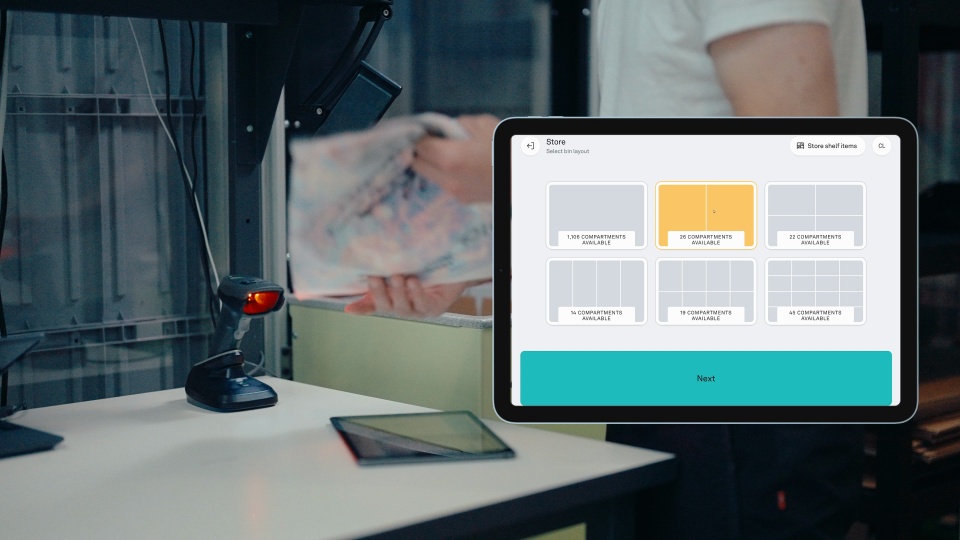The Pio App
The Pio warehouse app can be easily connected to any tech stack, ERP, or WMS (warehouse management system) via our developer-friendly API. The open API enables connections to multiple inventory sources, order channels, and purchase order sources. However, for many small to midsize businesses, the ERP or WMS route is neither necessary nor recommended.
But before we dive in further, let’s clear up a few things.
What is "plug-and-play"?
Plug-and-play refers to a device or software that works as intended as soon as it’s connected, without any coding, or complicated configurations.
What is a technology stack?
When we say “tech stack,” we’re referring to the set of interconnected software and services that you use to run your business, from managing your warehouse to your ecommerce website. These tech stacks can comprise platforms, applications, programming, frameworks, and tools.
There’s a massive range of software solutions and tech options that you can use to make running your online store easier, and every aspect of your ecommerce operations can use a different tech stack, from payment processing to warehouse management.
The best integrations and technologies will be open, and as close to "plug-and-play" as possible. This means good documentation, open standards, and responsive support with commercial offerings.
The more pieces you add to your tech stack, the more complex your operations and implementations become.
A strong tech stack is simple—it delivers what’s needed but avoids unnecessary complexity. It should also let you take advantage of the best technology now, and in the future. Flexibility and openness allow the freedom to easily add, replace, or remove technologies for a customer-centric, resilient tech stack. By using independent pieces that work together, you can scale and adapt as your business grows and changes.
Why you should simplify your tech stack
A simplified tech stack can save you money. Secondly, it can streamline processes for higher productivity. When you take a look at the systems that are running within your warehouse and logistics operation, it’s important to understand how they connect, what’s essential, and what can be eliminated for the greatest efficiency.
Challenges and Alternatives
For low-complexity operations of small to midsize businesses, an ERP or WMS is neither necessary nor recommended.
ERPs are generic applications that aren’t tailored to your operational needs. Though configurable, you need experts to build and implement the solution. Plus, their rigid nature blocks evolution and scalability as your business grows and your requirements shift. You often end up paying for features you don’t use, along with the high cost of setup and subscription.
Rather than taking the ERP route, you can build a modular tech stack of best-in-class apps with an ecommerce platform that ties it all together—such as Shopify. The most popular ecommerce platform, particularly with SMBs, Shopify sits at the heart of a rich ecosystem of apps that you can connect without any coding. While the configuration of ERPs requires you to rely on third-party developers and software experts, Shopify allows in-house teams to take ownership of their tech stack.
We’re big fans of Shopify for its ease of use and comprehensive ecosystem. However, it may feel overwhelming to choose the right app for your needs, among thousands of promising options. Certain apps may be more reliable than others, and some may require further setup or configuration. Paying for each app can also add up, especially if your operations call for a large number. But all things considered, we consider Shopify to be a brilliant ecommerce platform for the vast majority of ecommerce SMBs.
Pio + Shopify = End-to-end automation
Pio replaces manual warehouse processes with powerful automation and connects to Shopify in minutes without any coding. The setup couldn’t be easier—you simply share API tokens, and your inventory and orders are continuously synced between Pio and Shopify. To fully automate shipments, Pio includes native integrations with ShipStation and Webshipper, so that shipping labels print automatically once an order is packed. If you require more sophisticated forecasting and procurement features than Shopify can offer, we’ve built a plug-in that syncs with Inventory Planner.
Take this example of how Pio and Shopify work together. In the Pio app, you can set order prioritization rules triggered by either the order channel, shipping service, or an order tag. The prioritization rules allow you to set cut-off times, make express fulfillments, or strategically hold orders. In Shopify, you can also create customized rules to add tags identifying specific types of orders that then sync to the prioritization processes you’ve set in Pio. Together, Shopify and Pio offer advanced order management and execution capabilities.
With Pio and Shopify covering all sides of your ecommerce operation, a traditional ERP or WMS becomes obsolete. Instead, you’ve established a powerful, efficient, and modular tech stack that’s both affordable and adaptive to your changing needs.
To sum up...
Leveraging automation has become essential to success, across every part of your business. Previously, warehouse automation was accessible only to industry giants and depended on costly, complex tech stacks. Now, Pio has leveled the playing field for SMBs. The Pio app fits into the Shopify ecosystem as the final piece that enables end-to-end automation in your operations—and it unlocks a modern, modular approach for a flexible, affordable, and highly-customized tech stack for SMBs. By embracing automation in both digital and physical warehouse processes, you set your business up for success long into the future.
Speak to an expert on how Pio can transform your tech stack. Not on Shopify? Pio’s open API can integrate with any system.


-1.jpg?width=1920&name=pio_foto%20(9%20of%2082)-1.jpg)


.jpg?width=600&name=Beauty-Welness-Pio-04743%20(1).jpg)